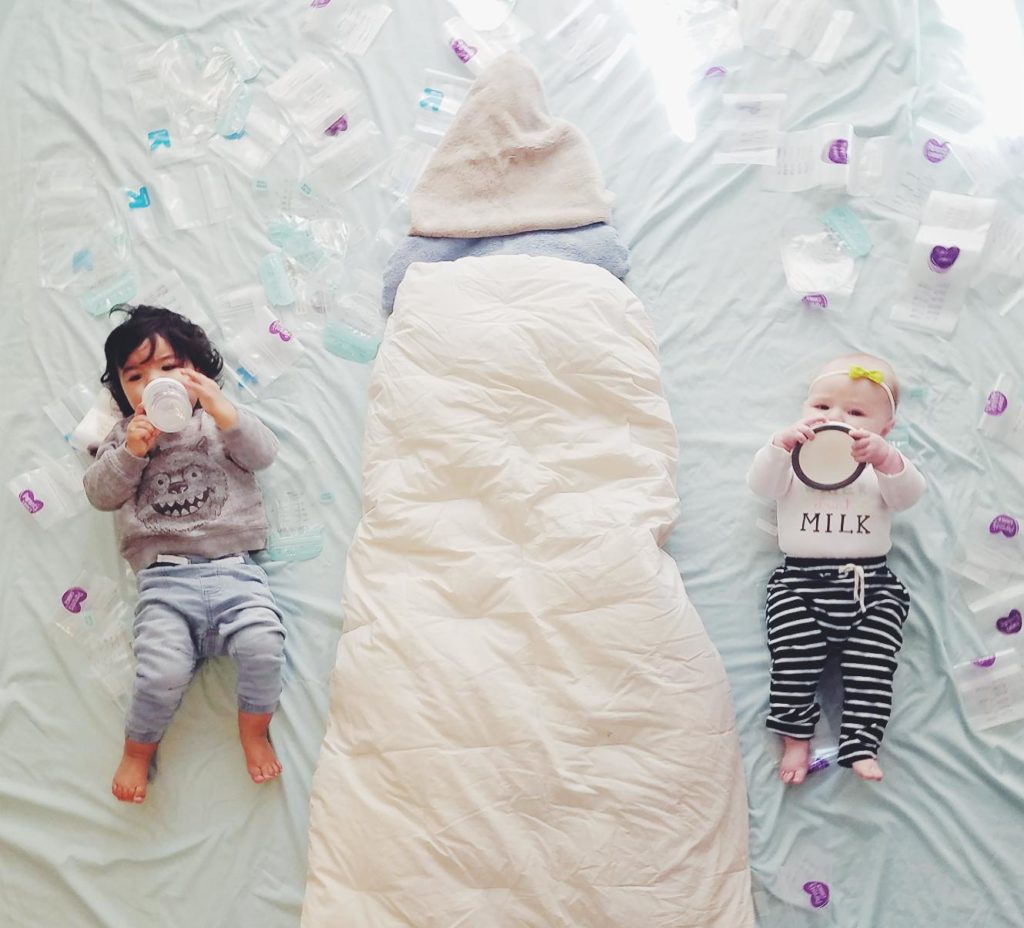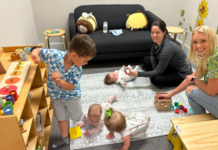
Our Milk Sharing Story
There are a few different scenarios that might cause a family to seek out donor breast milk for their baby. A mother might have a medical condition that prevents her from breastfeeding or might keep her from producing enough milk to provide for her baby. A mother might be on medication that prevents her from being able to provide her baby with her own breast milk.
There are other reasons a family might choose to utilize donor breast milk for their baby, but in our case, our son was adopted and I was unable to produce breast milk for him. If an adoptive family wants to provide their child with breast milk, then usually the only way to do that is through milk sharing.
Milk sharing is when breast milk from one mother is donated/given to the infant of another mother. There are two types of milk sharing. Formal (through hospitals and milk banks) and informal (through private connections). Because of informal milk sharing, we were able to keep our son on breast milk for his entire first year. We did supplement with formula some when we traveled or when our stash ran low, which happened pretty infrequently.
Deciding to use donor milk is a very personal choice. For us, we knew that if we had a biological child I would have wanted to breastfeed if possible. When we adopted our son we really wanted to be able to provide him with the same opportunity and we were so grateful when we learned about milk sharing.
We did a lot of research and sought out advice from those who had used donor milk in the past, lactation professionals, and our son’s pediatrician. Once we felt informed we knew we were making the right choice for our family by accepting donations from local donors. Some of our donors were close friends, but others were complete strangers. Milk sharing isn’t right for every family, and that’s OK. Definitely make sure you do your research and talk to your pediatrician if you’re considering milk sharing.

How Do You Get Donor Milk/How Do You Donate Milk?
We met most of our donors either through friends/family or through milk sharing groups on Facebook. Some NICUs accept donor milk from screened donors and there are local milk banks you can use that also screen donors and pasteurize the breast milk for safety. If you purchase milk from a milk bank it can get expensive quickly and the screening process for donors is pretty intense. There are ways to pasteurize donor milk at home if that’s something you’re interested in.
It’s important to know that if you’re collecting private/informal donations of breast milk, no money should be exchanged. All of our donations came to us free of charge. We did replace milk storage bags for several donors, especially those who donated a lot or often. We met a lot of our donors through two different Facebook pages, Eats on Feets and Human Milk 4 Human Babies. Both groups have tons of local chapters on FB, it just might take a little searching to find one near you.
How Do You Know It’s Safe?
Well, the short answer is, you don’t 100%. Not if you’re excepting private/informal donations. It’s a lot of faith to put in people you don’t know. But if you know anything about pumping, you know that it is a labor of love. The process that goes into storing large quantities of breast milk is intense (and expensive), plus these mamas aren’t making ANY money for all the effort they’re putting into it. So to me, it seemed like an awful lot of work for someone to do if they didn’t truly have a heart for other families and their babies.

Things to Consider When Using Donor Milk
When considering a donor I have a couple of suggestions. First I suggest asking a lot of questions. When was the milk pumped? Has it been frozen the whole time? Where was it stored (milk lasts longer in a deep freezer)? Were they on any medications when the milk was pumped? How much alcohol or caffeine were they consuming during that time? Do they have any diseases that could be transferred through breast milk?
Secondly, I suggest you do your research on safe milk sharing and milk storing. Eats on Feets is a great place to start. Third, trust your gut! Whenever I reached out to a potential donor the first thing I’d do is see if we had any mutual friends. If we did, that always gave me peace of mind. Don’t be afraid to ask lots of questions to get to know them a little. If something feels off or if they don’t feel like a good fit for you, listen to that instinct.
Our milk sharing journey took us all over the state of SC. We even had people offer to donate when we were traveling. If you are an over-producer or have a huge stash just sitting in your freezer, consider donating to a family in need. If you’re a mama who can’t breastfeed but would like your baby to still get breast milk, even if it’s just for a little while, look into milk sharing. World Breastfeeding Week can be hard for those who weren’t able to breastfeed. I’m so grateful for the wonderful community that came together to feed my son when I couldn’t.














